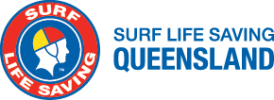This guideline is to ensure patrol members use correct procedures when approached by parents, friends or family who have lost a person. Patrol members will frequently become involved with scenarios involving lost and found persons. This guideline provides some principles on which to base a response.
A lost person is where a family member, friend or guardian approaches the lifesaver and reports a person missing or a person is identified as missing as a result of an aquatic incident.
A found person is where the patrol member either:
- Is approached by a member of public who has lost their group;
- Comes across someone who appears distressed and lost; or
- When a member of public finds the child/person and hands them over to a patrol member.
Note: If a patrol member is informed of a lost/missing person, that patrol member is to keep the informant with them or another patrol member at all times until the missing person is located.
The patrol member should follow a series of escalating procedures to handle lost and found persons:
| Serial | Action | Suggested Time Frame |
| 1 | Information gathering & contact Surfcom | 0 – 2 Minutes |
| 2 | Initial search | 2 -10 Minutes |
| 3 | Coordinated search: under eternal agency | Search continued under direction |
Contact Surfcom immediately for any missing person/lost person.
Information Gathering
Gain the necessary information to commence appropriate actions.
Missing child:
- Obtain descriptive details of the missing person (name, age, basic clothing);
- Identify last location of missing person;
- Identify time since last seen.
Missing parents:
- Try to obtain child’s name;
- Obtain child’s basic description;
- Do not carry child on shoulders or give anything to drink/eat.
Missing person in the water:
- Identify the activity and last location of missing person;
- Identify time since last seen;
- Identify their condition and if they are a swimmer or not.
Preliminary observation:
- Patrol members are to observe the local area, commence surveillance at water’s edge and work back;
- Reassure parents or carer and where possible obtain addition details such as other possible search areas i.e., location of car, residence, etc.
Initial search:
- Patrol members are to commence the relay of information. Search to encompass adjacent beach areas and off-beach sites in the immediate area;
- Initial information should be passed to the appropriate coordinating agency;
- Commence recording of information.
Co-ordinated search:
- All available information passed onto Surfcom;
- Lifesavers to continue as directed and in conjunction with the duty officer/ Lifeguard Supervisor (When applicable).



Post your comment on this topic.